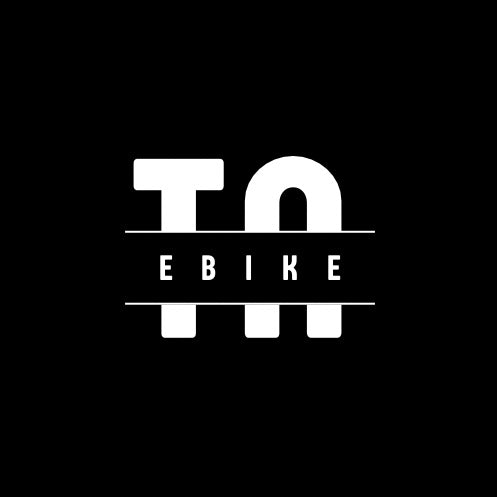The Ultimate Guide to Buying Your First Ebike
Electric bikes (ebikes) are transforming the way we travel, offering a versatile, eco-friendly, and fun mode of transportation. Whether you’re commuting, exercising, or exploring, finding the right ebike is essential. This guide will help you navigate the key factors to consider before making your purchase.
Key Features to Consider
1. Motor Power (Watts)
The motor is the heart of an ebike, and its power is measured in watts (W). Common options include:
-
250W: Suitable for flat terrains and casual riders.
-
500W: Offers more power for moderate hills and heavier riders.
-
750W and above: Ideal for steep hills, off-road adventures, and carrying cargo.
Choose motor power based on your typical riding conditions and performance needs.
2. Battery Capacity (Ah and Wh)
Battery capacity determines how far you can ride on a single charge. It is measured in:
-
Ampere-hours (Ah): Indicates energy storage.
-
Watt-hours (Wh): Calculated as volts × amp-hours. Provides a more accurate measure of range. For example, a 48V 10Ah battery equals 480Wh.
A higher Wh rating means longer range. Typical ranges include:
-
300-500Wh: 20-50 miles per charge.
-
500-750Wh: 40-80 miles per charge.
3. Pedal Assist vs. Throttle
-
Pedal Assist: Engages the motor as you pedal, with adjustable levels of assistance. Ideal for exercise and extending battery life.
-
Throttle: Allows you to accelerate without pedaling. Perfect for quick bursts of speed or when you need a break from pedaling.
Some ebikes offer both features, providing flexibility for different riding styles.
4. Speed and Legal Limits
Ebikes are classified by speed and motor operation:
-
Class 1: Pedal-assist only, max speed 20 mph.
-
Class 2: Pedal-assist and throttle, max speed 20 mph.
-
Class 3: Pedal-assist only, max speed 28 mph.
Check local laws to ensure compliance with speed limits and usage restrictions.
5. Comfort and Fit
Comfort is crucial for an enjoyable ride. Look for:
-
Ergonomic handlebars: Reduce strain on wrists.
-
Adjustable seat and handlebars: Ensure proper posture.
-
Suspension: Front or full suspension absorbs shocks on rough terrain.
-
Tires: Wider tires offer better stability and cushioning.
Test different frame sizes to find one that suits your height and riding style.
6. Budget
Ebikes range from $1,000 to over $10,000. Key price categories include:
-
Entry-level ($1,000-$2,000): Basic features, shorter range.
-
Mid-range ($2,000-$4,000): Improved components, better battery life.
-
High-end ($4,000+): Premium materials, advanced features, extended range.
Set a budget that balances performance and features without overspending.
7. Test Ride
A test ride is essential to evaluate:
-
Motor responsiveness: Smooth power delivery.
-
Handling: Stability and maneuverability.
-
Braking: Reliable stopping power.
-
Comfort: Overall fit and feel during the ride.
Visit local dealers to test multiple models and find your perfect match.
8. Additional Features
Consider features that enhance convenience and safety:
-
Integrated lights: Improve visibility at night.
-
LCD display: Monitor speed, battery life, and distance.
-
Built-in racks: Carry groceries or gear.
-
Smart features: App connectivity for tracking rides and adjusting settings.
9. Maintenance and Warranty
Ebikes require regular upkeep to stay in top condition:
-
Keep the battery charged and clean.
-
Inspect tires, brakes, and chain regularly.
-
Check the manufacturer’s warranty for coverage on motor, battery, and components.
How to Choose the Right Ebike for You
1. Assess Your Riding Goals
-
Daily Commutes: Opt for a lightweight model with a mid-power motor (250W-500W) and a long-range battery. Look for practical features like fenders, racks, and integrated lights.
-
Recreational Riding: A versatile hybrid ebike with moderate motor power and a comfortable design is ideal for leisurely rides.
-
Off-Road Adventures: Choose a mountain ebike with a powerful motor (500W-750W), wide tires, and full suspension for tackling rough terrain.
2. Evaluate Terrain and Distance
-
Flat Terrain: A 250W motor with a smaller battery may suffice.
-
Hilly Areas: Opt for a mid-drive motor and a larger battery for climbing efficiency.
-
Long Rides: Prioritize a high-capacity battery (500Wh+) to minimize the need for frequent recharges.
3. Consider Rider Weight and Cargo
Heavier riders or those carrying cargo may require a higher-powered motor (750W) and a sturdy frame. Look for bikes with built-in racks and a higher weight capacity.
4. Match Features to Your Needs
-
If you ride in traffic or low-light conditions, prioritize models with integrated lights and reflective tires.
-
For commuters, built-in racks and pannier compatibility are essential for carrying items.
-
Adventure riders should look for bikes with durable components and enhanced suspension.
5. Think About Long-Term Use
-
Ensure the battery is replaceable and has a reputable warranty.
-
Research the availability of spare parts and local repair services.
-
Consider the resale value of the ebike if you plan to upgrade in the future.
Final Thoughts
Buying an ebike is an exciting investment in your lifestyle. By focusing on motor power, battery capacity, comfort, and features, you can find an ebike that meets your needs and budget. Remember to test ride, research local regulations, and think about your long-term usage. With the right ebike, you’ll enjoy countless miles of enjoyable, eco-friendly riding. Happy cycling!

